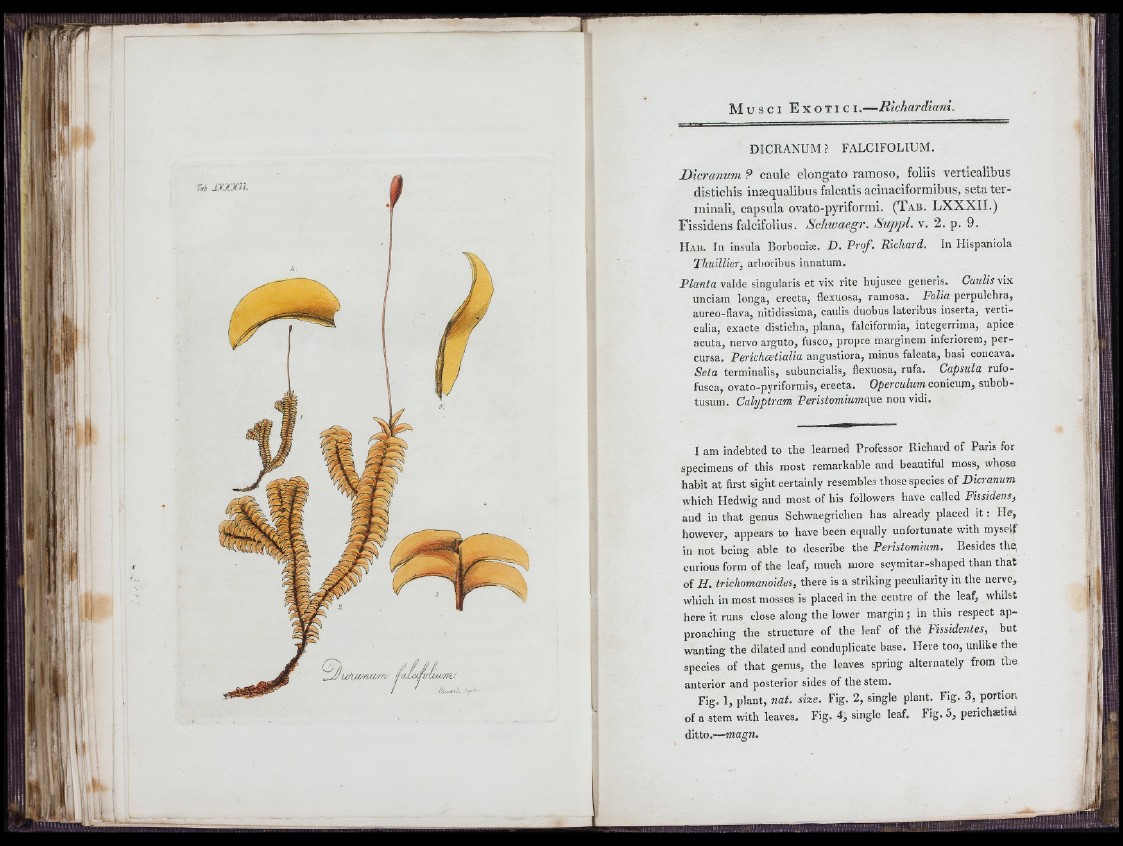
■Té M X X n .
DICRANUM? FALCIFOLIUM.
Dicranum ? caule elongato ramoso, foliis verticalibus
disticbis inæqualibus falcatis acinaciformibus, seta terminali,
capsula ovato-pyriformi. ( T a b . LXXXII.)
Fissidens falcifolius. Schwaegr. Suppl. v. 2. p. 9.
H ab. Ill insula Borboniæ. D . Vrof. Richard. In Hispaniola
Thuillier, arboribus innatum.
Planta valde singularis et vix rite liujusce generis. Cuulisvi-x.
unciam longa, erecta, flexuosa, ramosa. Folia perpulchra,
aureo-flava, nitidissima, caulis duobus lateribus inserta, verticalia,
exacte disticha, plana, falciforinia, integerrima, apice
acuta, nervo arguto, fusco, propre marginem inferiorem, percursa,
Perichcetialia angustiora, minus falcata, basi concava.
Seta terminalis, subuncialis, flexuosa, rufa. Capsula rufo-
fusca, ovato-pyriformis, erecta. Operculum conicum, subob-
tusum. Calyptram Peristomiumap.e non vidi.
I am indebted to the learned Professor Richard of Paris for
specimens of this most remarkable and beautiful moss, whose
habit at first sight certainly resembles those species of Dicranum
which Hedwig and most of his followers have called Fissidens,
and in that genus Schwaegrichen has already placed it : He,
however, appears to have been equally unfortunate with mysejf
in not being able to describe the Peristomium. Besides the
curious form of the leaf, much more scymitar-shaped than that
of H . trichomanoides, there is a striking peculiarity in the nerve,
which in most mosses is placed in the centre of the leaf, whilst
here it runs close along the lower margin ; in this respect approaching
the structure of the leaf of the Fissidentes, but
wanting the dilated and conduplicate base. Here too, unlike the
species of that genus, the leaves spring alternately from the
anterior and posterior sides of the stem.
Fig. 1, plant, nat. size. Fig. 2, single plant. Fig. 3, portion
of a stem with leaves. Fig. 4, single leaf. Fig. 5, perichætial
ditto.—magn.
x\
: M
\l